As with baseball, basketball, volleyball and the rather bizarre game known as American football, the sport of “canyoning” originated in the United States, where it is known as ‘canyoneering’. Wikipedia defines it as : “travelling in canyons using a variety of techniques that may include other outdoor activities such as walking, scrambling, climbing, jumping, abseiling and/or swimming.”
What better way to spend a searingly hot Paleochora July day, with afternoon temperature nearing 40c, than following the River Kakodikianos from the old stone bridge at Mahia (described in ‘Explore’, July 2009) downstream through the Vlithias gorge (‘Explore’, January 2010). Having left a car with dry clothes in the village ‘platea’ at Vlithias, 7km north of Paleochora, we drove 4km up the valley to park in Mahia, then walked down to the river.
After last winter, when rainfall in our local Selinou region was well above average, during February especially, it was no surprise to find relatively deep water flowing under the old bridge.
Starting at 260m above sea level, we would drop approx. 100m in around four kilometres to our point of egress below Vlithias. Important items – cameras, phones, car keys and most notably spinach pies and doughnuts – were wrapped tightly in plastic and dry bags inside rucksacks before we set off downstream below the bridge. Very soon we were knee-deep in water which, though cold initially, we soon became acclimatised to.
The first small waterfall came after around 200m, where we lowered ourselves down into the pool below. The uneven riverbed, unseen from above, at times shingle, more often slippery loose boulders, made for slow progress, but it was cool, in total shade, and thoroughly enjoyable. Sticks from the surrounding bamboo and plane trees were more than useful in helping to stay upright in water which was frequently waist deep.
Several waterfalls, deep pools and a couple of swims later, we reached the bridge carrying the Vlithias/Mahia road, an “escape route” back to dry clothes, but after just two minutes’ exposure to the mid-day heat, we unanimously opted to continue downstream. Here the river enters the Vlithias gorge, and becomes much narrower and faster flowing. One pool below a small fall was deep enough to leap into, and the nearby shingle shore provided a good place to dry out and have lunch.
A succession of small waterfalls led to a larger one, where we contemplated using the rope carried, managed to find a way down, but now there was no turning back, the sides of the gorge being inescapable. Brilliantly coloured damsel-flies flashed over the water, sunlight filtered through the canopy of trees, and the constant noise of cicadas was almost deafening.
Four hours from leaving Mahia, and after covering barely 4 km – less than three miles – we reached the concrete bridge below Vlithias and walked up into the village to get our dry clothes and to return to Paleochora.
An elderly local couple painting the village spring greeted us with some surprise, damp and dishevelled as we were. We told them our story whilst drying out, and as inevitably happens, a bottle of ‘raki’ appeared from nowhere. A toast of “Yeia Mas” – ‘our good health’ – was made to what may conceivably have been the first descent.
Footnote: Should you follow in our (very wet) footsteps, please take this walk seriously. Water levels may be higher, the river deeper, and more waterfalls irreversible. Escape from the sides is difficult if not impossible, ‘phone signal limited, and evacuation in the event of an accident or injury would be a major problem.

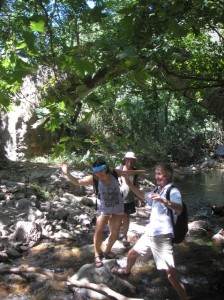

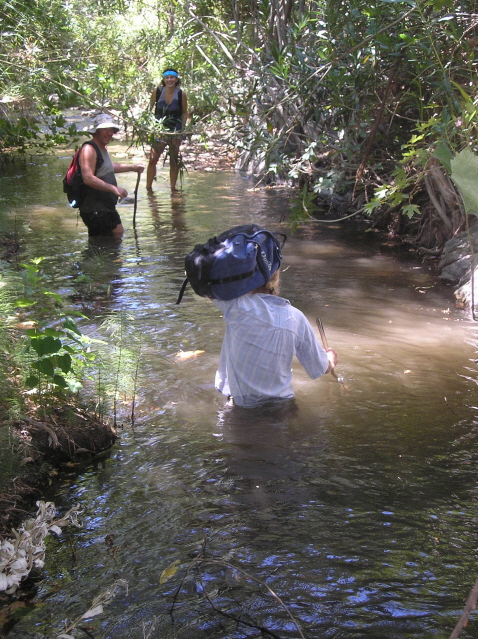
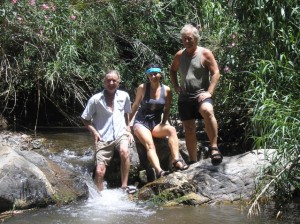
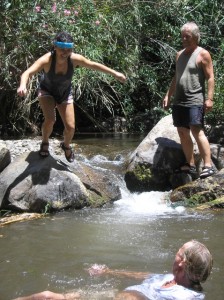
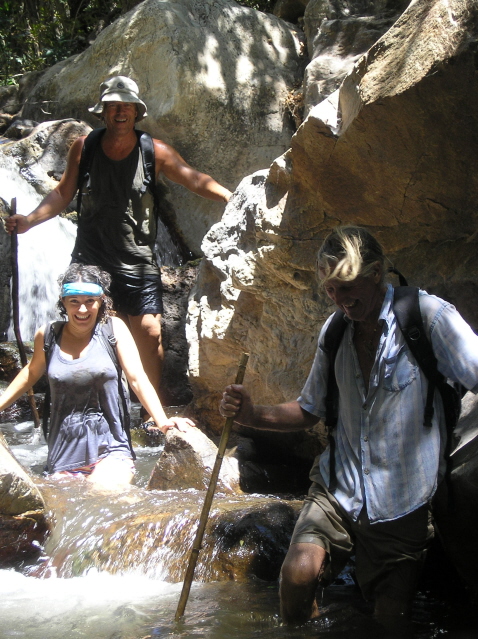
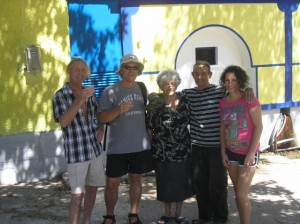

2 comments
Hi Bob, that sounds like a very enjoyable day out. I am wondering if September or October might be a good time to visit Paleochora? My wife and I fancy some walking on Crete. Neither of us has been there, but wish to take advantage of regular flights from our local airport to Chania.
There is so much history here. My family lived here in this area for hundreds off years. They fought for their lives against oppression. They crossed the river to escape with their lives. It was nice to see you enjoying this historical location.